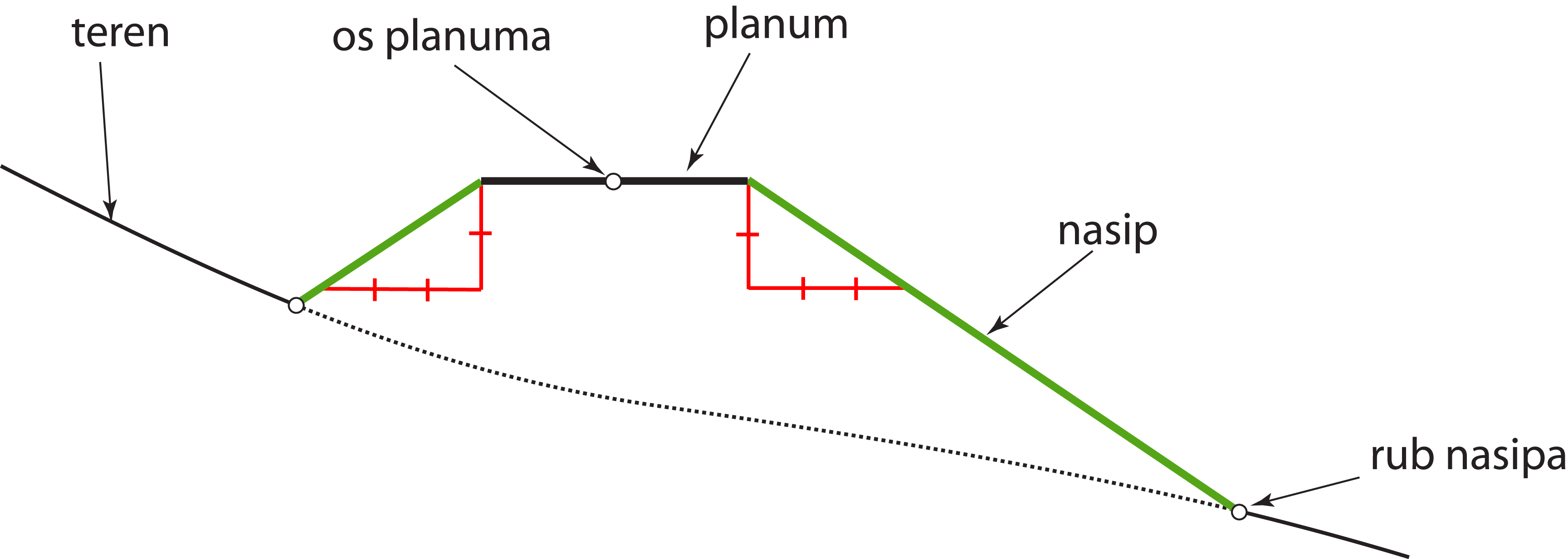
|
EXCAVATION or CUT - is the plane or the part of a surface with the slope \(n_U=\frac{4}{5}\) |
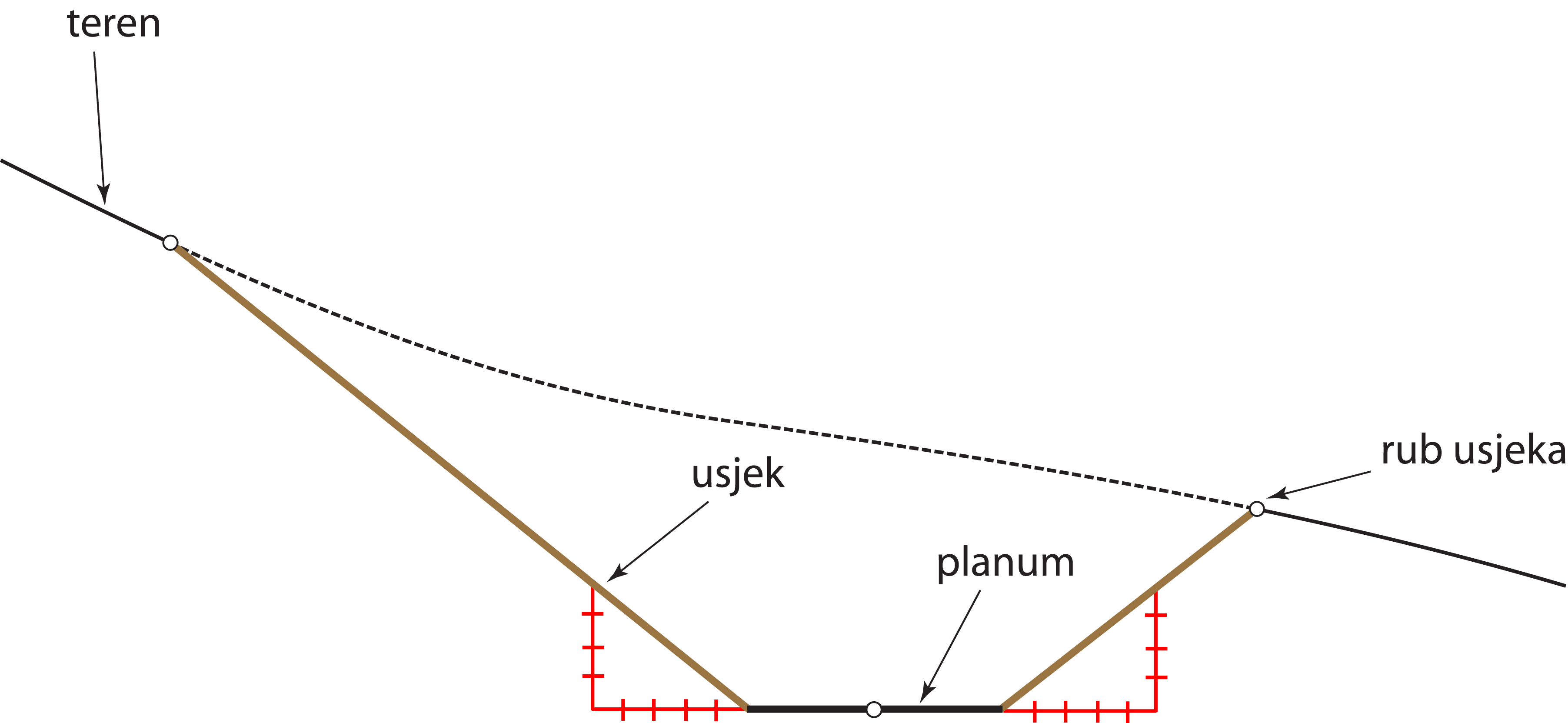 |
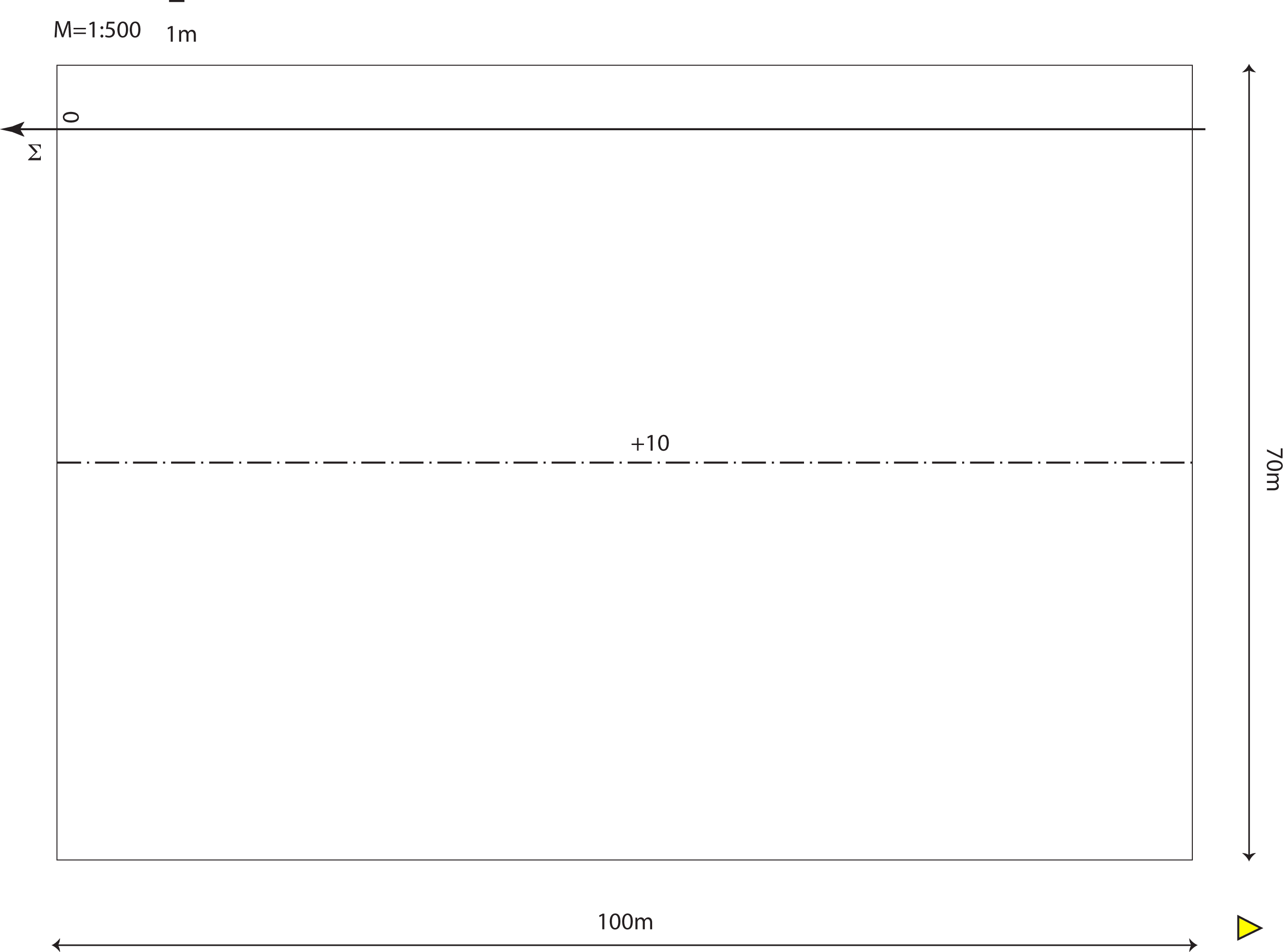
|
Steps of the construction:
2nd solution - program Rhino
 ideal terrain, subgrade and neutral transition
ideal terrain, subgrade and neutral transition
 fills (embankments)
fills (embankments)
 cuts (excavations)
cuts (excavations)
 final image
final image
A horizontal road on a circular arc on a ideal terrain
EXERCISE 2: Let the plane \( \Sigma\) be the ideal terrain with the slope 20%. On the template this plane is given with the scale of slopes and the horizontal with the elevation 0.The road, having the wifth of 10m, streches along a circular arc which is on the template given with its axis.
Solve the earthwork for building this road.
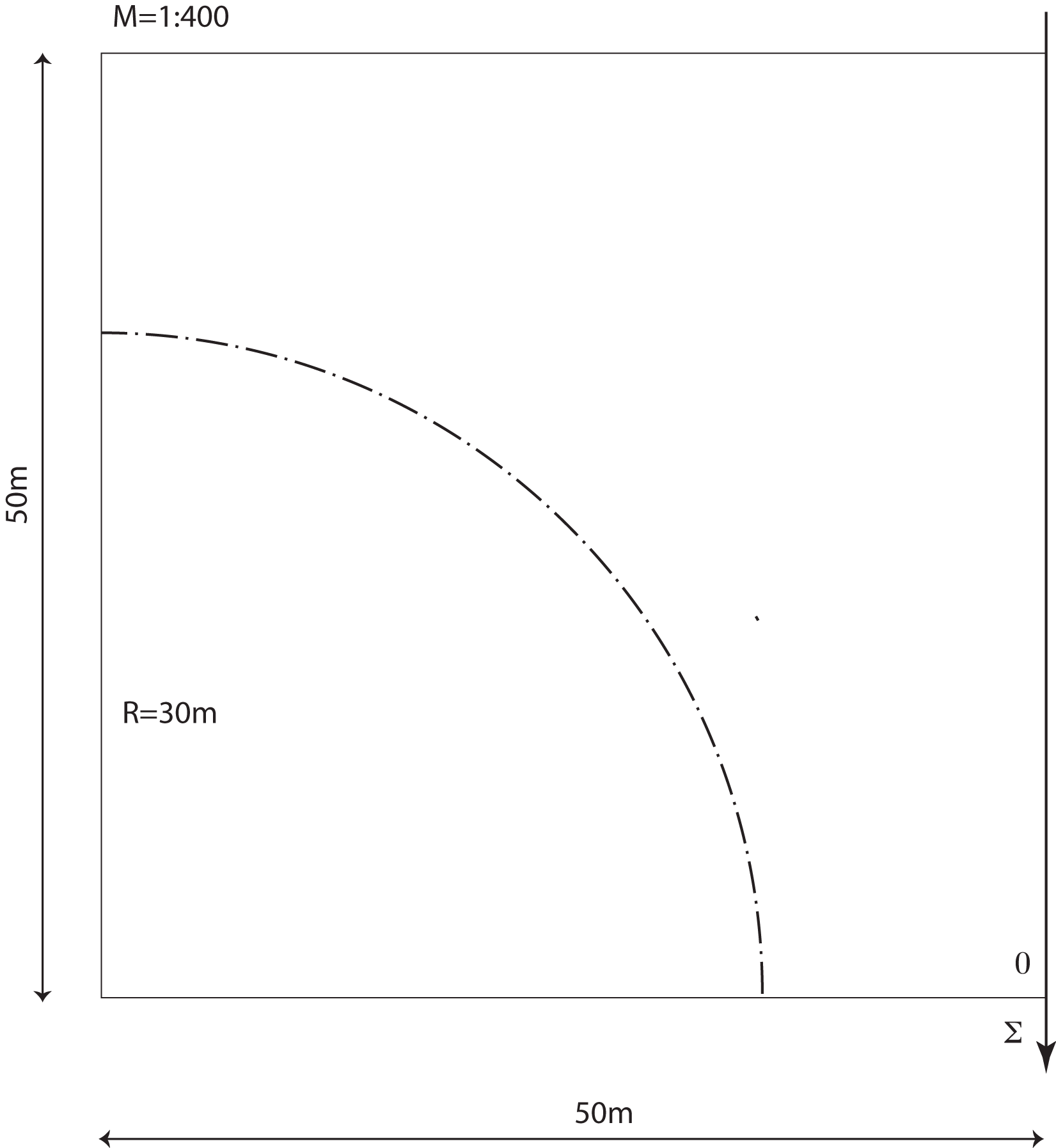
1st solution - elevated projection
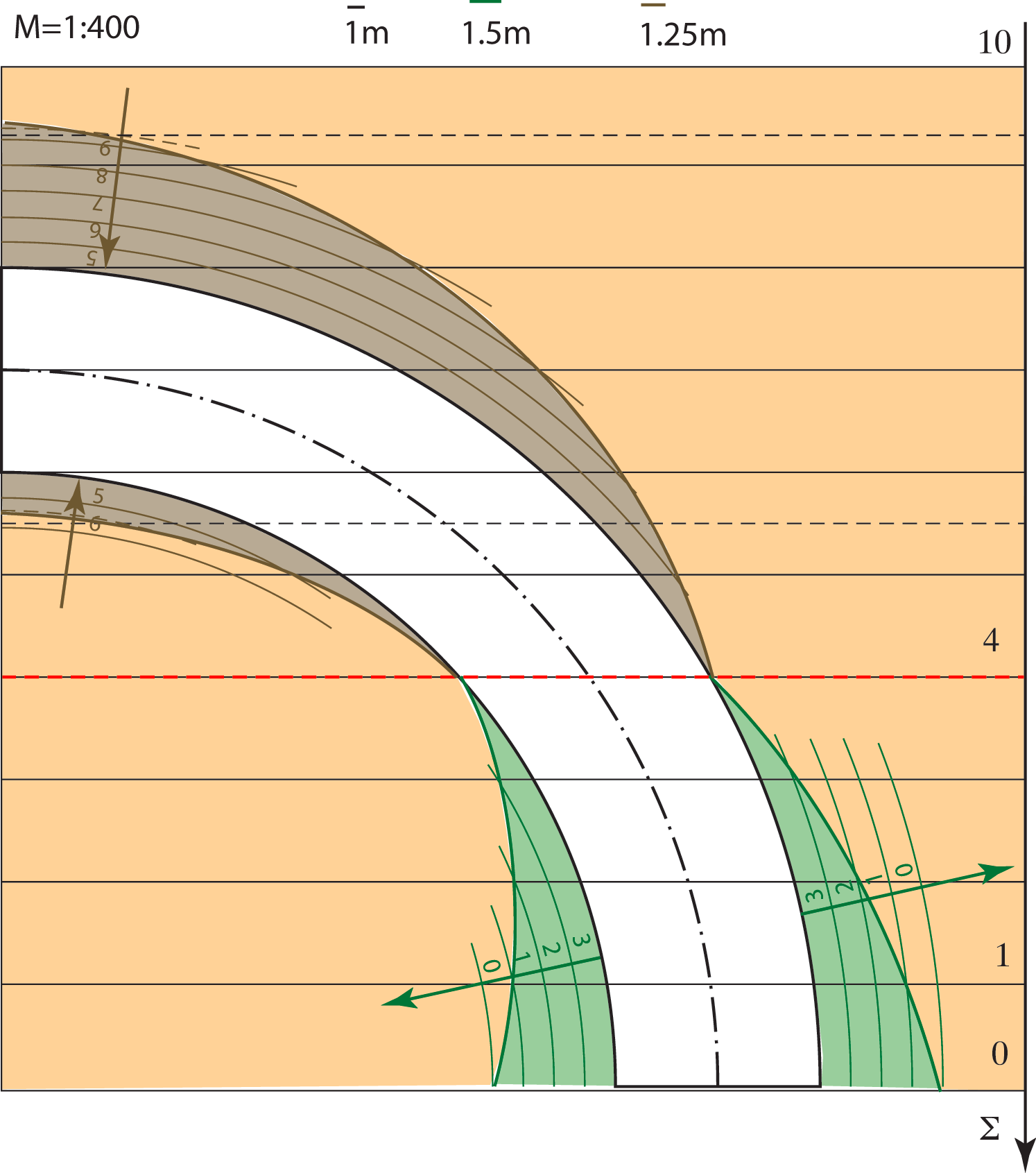
2nd solution - program Rhino
 ideal terrain, subgrade and the neutral line
ideal terrain, subgrade and the neutral line
 fills and cuts
fills and cuts
A horizontal construction site with a straight horizontal road on a ideal terrain
EXERCISE 3: Let the plane \( \Sigma\) be the ideal terrain with the slope 25%. On the template this plane is given with the scale of slope and the horizontal with the elevation 0.The horizontal construction site has the elevation 16. The road has the width 10 and it is given with its axis on the template.
Solve the earthwork for building this road.
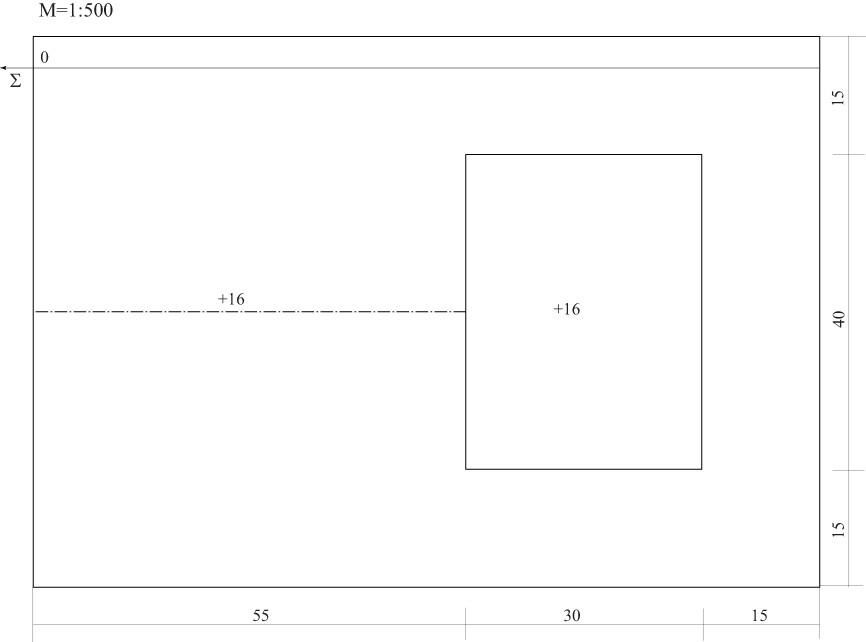
1st solution - elevated projection
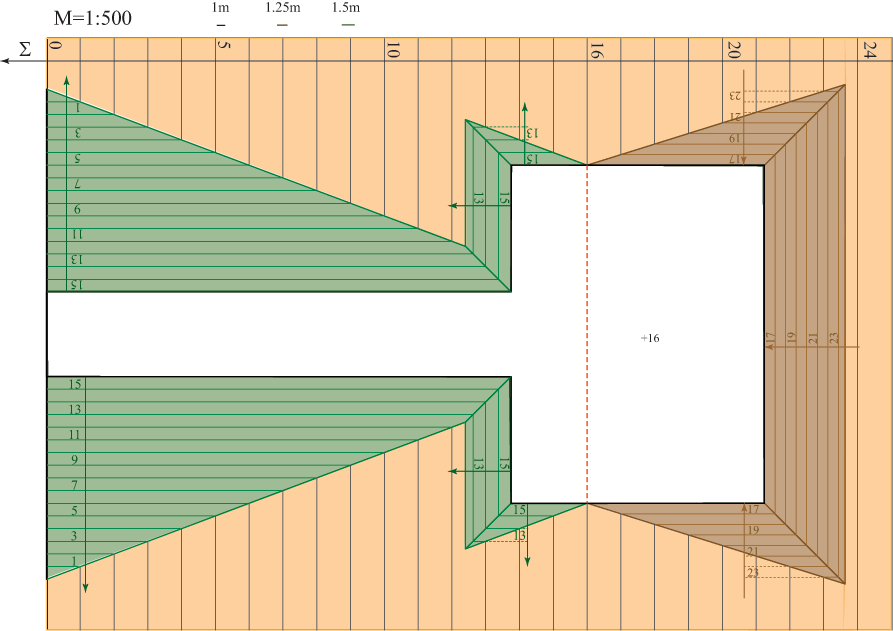
Steps of the construction:
2nd solution - program Rhino
 cuts (excavations)
cuts (excavations)
 fills ( embankment)
fills ( embankment)
Horizontal road with a straight part and a part on a circular arc on a ideal terrain
EXERCISE 4: Let the plane \( \Sigma\) be the ideal terrain with the slope 18%. On the template this plane is given with the scale of slope and the horizontal with the elevation 5.The road has the width 12m and stretches along a straight part and a circular arc with the elevation 16. On the template the road is given with its axis.
Solve the earthwork for building this road.
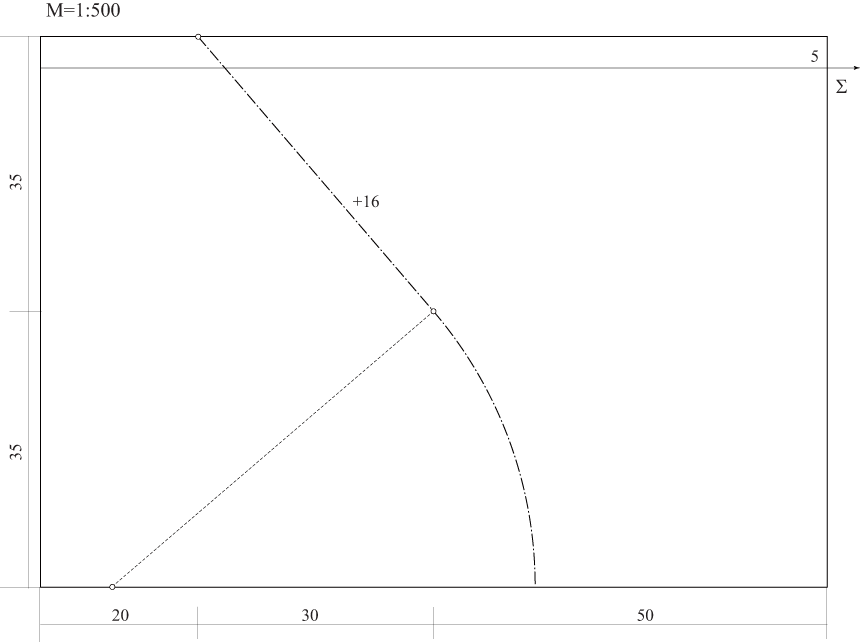
1st solution - elevated projection
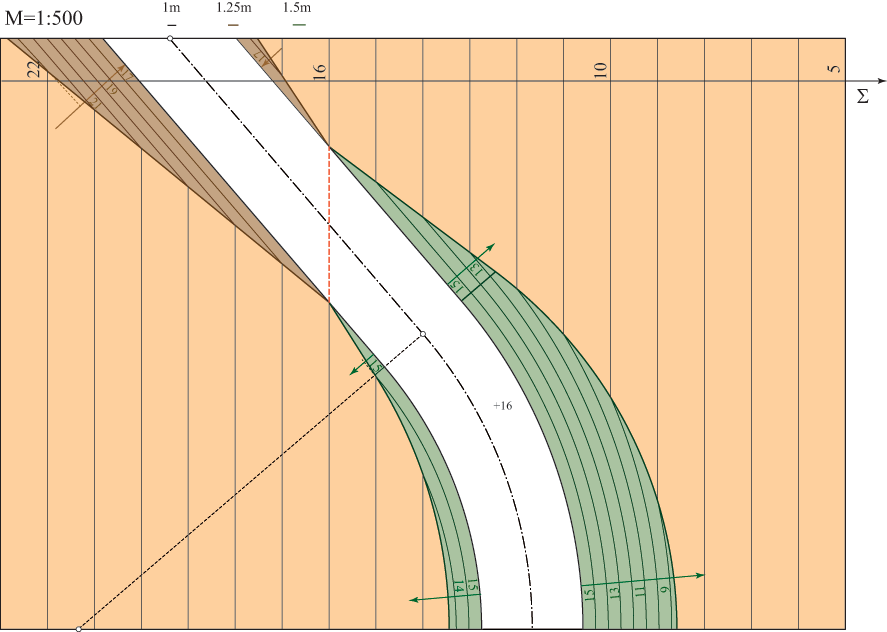
2nd solution - program Rhino
 ideal terrain, subgrade and neutral line
ideal terrain, subgrade and neutral line
 fills and curs
fills and curs
 final image
final image
 final image - horizontals
final image - horizontals
Created by Sonja Gorjanc and Ema Jurkin, translated by Helena Halas and Iva Kodrnja - 3DGeomTeh - Developing project of the University of Zagreb